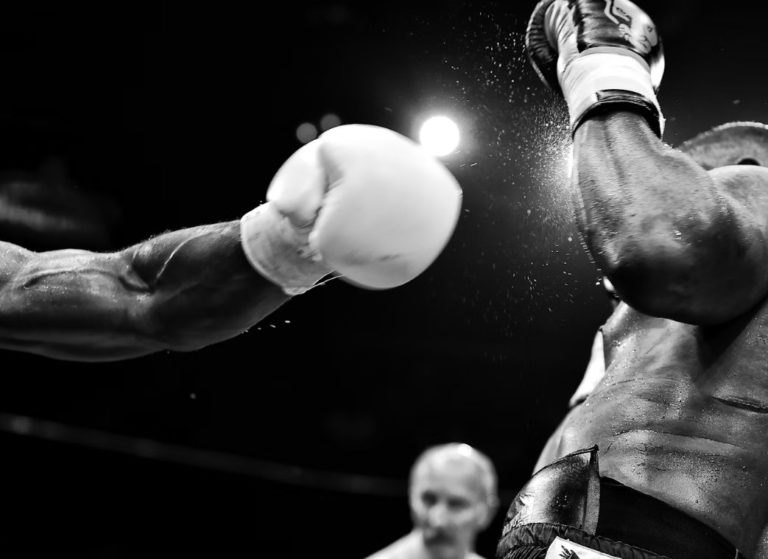How to Throw a Hook: A Step-by-Step Guide
Learning how to throw a hook punch is an essential skill for anyone who wants to excel in boxing or kickboxing. It is one of the most powerful punches that can be used to knock out an opponent. In this article, we will provide you with a simple and easy-to-follow breakdown on how to throw a hook punch.
To start, you need to assume a boxer’s stance. Next, shift your weight from your lead foot to your rear foot while twisting your torso. This motion will generate power and momentum for the punch. Finally, raise your elbow and connect the punch to your target.
How To Throw A Hook
Start With A Boxing Stance
To throw a hook punch, one must start with a boxer’s stance. This involves keeping the hands up, chin and elbows tucked, and eyes up. The fighter should lead with their weak foot and tilt their body slightly off-center to make their body a smaller target. It is essential to relax and breathe and avoid clenching the hands and forearms.
Shift Your Weight From Lead Foot To Rear Foot
To execute the hook punch, the fighter needs to shift their weight from their lead foot to their rear foot. They should start by putting weight on their lead foot, lean slightly on it, and plant it on the ground while keeping their rear heel off the ground. Next, they should transfer the weight from their lead foot to their rear foot by pivoting their rear heel inward and plant it on the ground. At the same time, they should pivot their lead heel off the ground and outward. The fighter should twist their lead hip outward following their lead heel. This, combined with the weight transfer, is where the hook’s power comes from. The arm is only used to transfer the force to the target. It is essential to focus on the footwork first, and the fighter should get comfortable with this footwork before throwing the punch. They should move their weight back and forth by swinging their heels inward and outward.
Raise Your Elbow And Connect The Punch
As the fighter’s body is rotating, they should raise their elbow to shoulder height and lock it at a 90-degree angle. They should follow through and connect the punch, making sure to keep their elbow in-line with their fist. The fighter should stop rotating their body once their hand reaches their eyes. If they go too far, they will get off balance. It doesn’t matter whether the fighter keeps their thumb up or facing towards them; they should do whatever they feel most comfortable with. It is crucial to keep the body tight and not overextend. This will make the hook feel fast and balanced.
The hook punch is one of the most powerful punches in boxing and requires proper technique for maximum effectiveness. By following these steps, a fighter can throw a hook punch with accuracy and power. It is essential to practice footwork, positioning, and control to execute the hook punch correctly. A hook punch can be used as a standalone punch or as part of a combination to surprise an opponent. It is also essential to exhale while throwing the punch and use the legs and core to generate more power. A fighter can also throw a shovel hook, rear hook, or check hook using similar techniques.
Common Mistakes
When throwing a hook, there are several common mistakes that can be made. The first mistake is overextending past the face. This can lead to a loss of balance and leave the ribcage open for attack. Another mistake is winding up the hook by dropping the arm, which can telegraph the punch and give the opponent time to react. A loose guard while throwing the hook is also a mistake, as it can leave the face open to counter punches. It is important to keep the hands close to the chin to throw fast, tight, and controlled hooks, and to easily return to the guard. Finally, throwing the hook with a loose wrist and fist can lead to injury. It is essential to keep the wrist straight and the fist tight to prevent the hand from bending on impact.
Why You Should Learn To Throw A Hook?
Learning to throw a hook punch can greatly enhance a fighter’s offensive arsenal. The hook punch is a powerful punch that can be used to deliver a knockout blow to an opponent. It involves transferring weight from the rear foot to the front foot while rotating the hips and shoulders to generate power. This punch is particularly effective when used as a follow-up to a cross punch.
In addition to its power, the hook punch can also be used to add variety and angles to a fighter’s offense. For instance, if an opponent is using a high guard to block jabs and crosses, a hook punch can be used to wrap around their guard and force them to change their defense. Similarly, a hook to the body can be used to make an opponent drop their guard, creating an opening for other punches.
By mastering the hook punch, a fighter can become more versatile and unpredictable in the ring. Legendary boxers like Joe Frazier were known for their devastating hook punches, which helped them achieve great success in the sport. Therefore, it is recommended that fighters learn this punch to improve their strength and defense.
Where Should You Go From Here?
To improve your hook punch, you should practice it regularly. Begin by mastering the basic technique and footwork. Practice throwing hooks when shadowboxing to get used to the movement.
Once you feel comfortable with the technique, try it out on the heavy bag or aqua bag to build endurance. For accuracy training, use the wall bag or the double-end bag.
To add variety to your training, try different variations and angles of the hook punch. Watch Ryan Garcia’s explosive left hooks to get inspired.
If you’re looking for boxing equipment, check out these articles on the best boxing jump ropes, gloves, hand wraps, head gear, shoes, and groin protectors.
Remember to always warm up before practicing any boxing drills or sparring. With consistent practice and development, you can become proficient in throwing a powerful hook punch.
Frequently Asked Questions
Proper Techniques for Executing a Lead Hook in Boxing
The lead hook is a punch thrown with the lead hand, usually following a jab. To execute a lead hook in boxing, one must first pivot on the lead foot and rotate the hips and torso towards the target. The elbow should be bent at a 90-degree angle, and the fist should be brought towards the target in a circular motion. The punch should be delivered with the knuckles and the thumb should be tucked under the fist to avoid injury.
Difference between a Lead Hook and a Rear Hook
A lead hook is thrown with the lead hand, while a rear hook is thrown with the rear hand. The lead hook is usually used to set up the rear hook or to counter an opponent’s attack. The rear hook is a powerful punch that is usually thrown after a combination or as a finishing blow.
Correct Thumb Position When Throwing a Hook Punch in Boxing
The thumb should be tucked under the fist when throwing a hook punch in boxing. This is to avoid injury to the thumb and wrist. If the thumb is not tucked under the fist, it can get caught on the target or the opponent’s body, resulting in a sprained or broken thumb.
Effective Ways to Practice Hook Punches on a Heavy Bag
To effectively practice hook punches on a heavy bag, one should first warm up with some light shadowboxing and stretching. Begin by throwing single lead hooks and rear hooks, focusing on proper technique and form. Gradually increase the speed and power of the punches, while maintaining proper form. Mix up the punches with combinations and footwork to simulate a real fight.
Various Types of Hooks Used in Boxing and Their Applications
There are several types of hooks used in boxing, including the lead hook, rear hook, shovel hook, and uppercut hook. The lead hook and rear hook are the most common and are used to set up combinations or to counter an opponent’s attack. The shovel hook is a looping punch that is thrown to the body, while the uppercut hook is an upward punch that is thrown to the chin or solar plexus.
Technique for Throwing a Hook in Muay Thai
In Muay Thai, the technique for throwing a hook is similar to boxing, but with some key differences. The punch is usually thrown with the lead hand, and the elbow is brought up to protect the face. The punch is delivered with the top two knuckles, and the thumb is tucked under the fist. The punch is usually followed by a kick or knee strike to create a combination.


